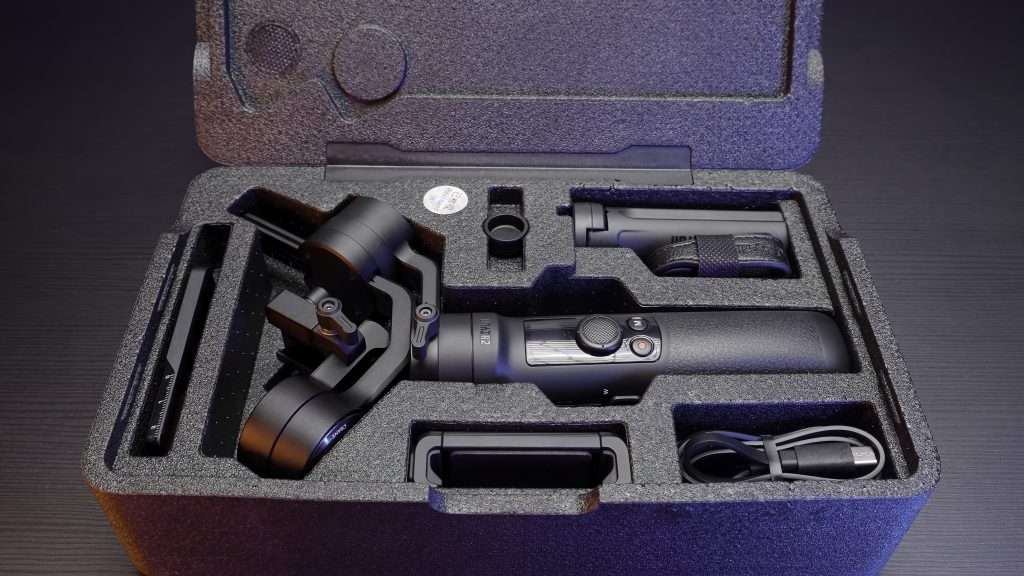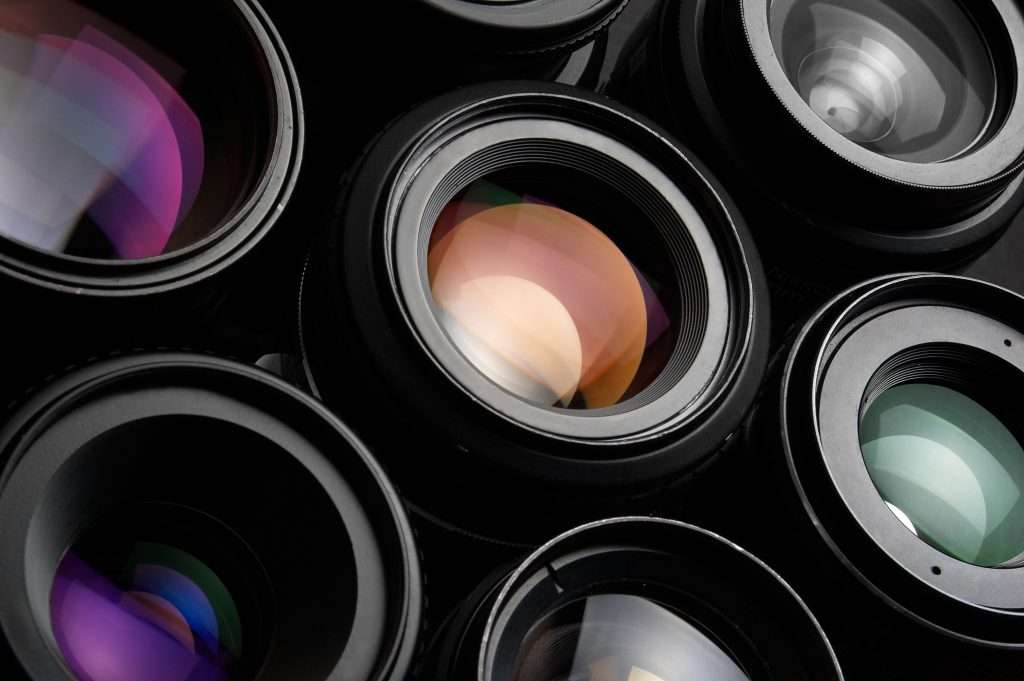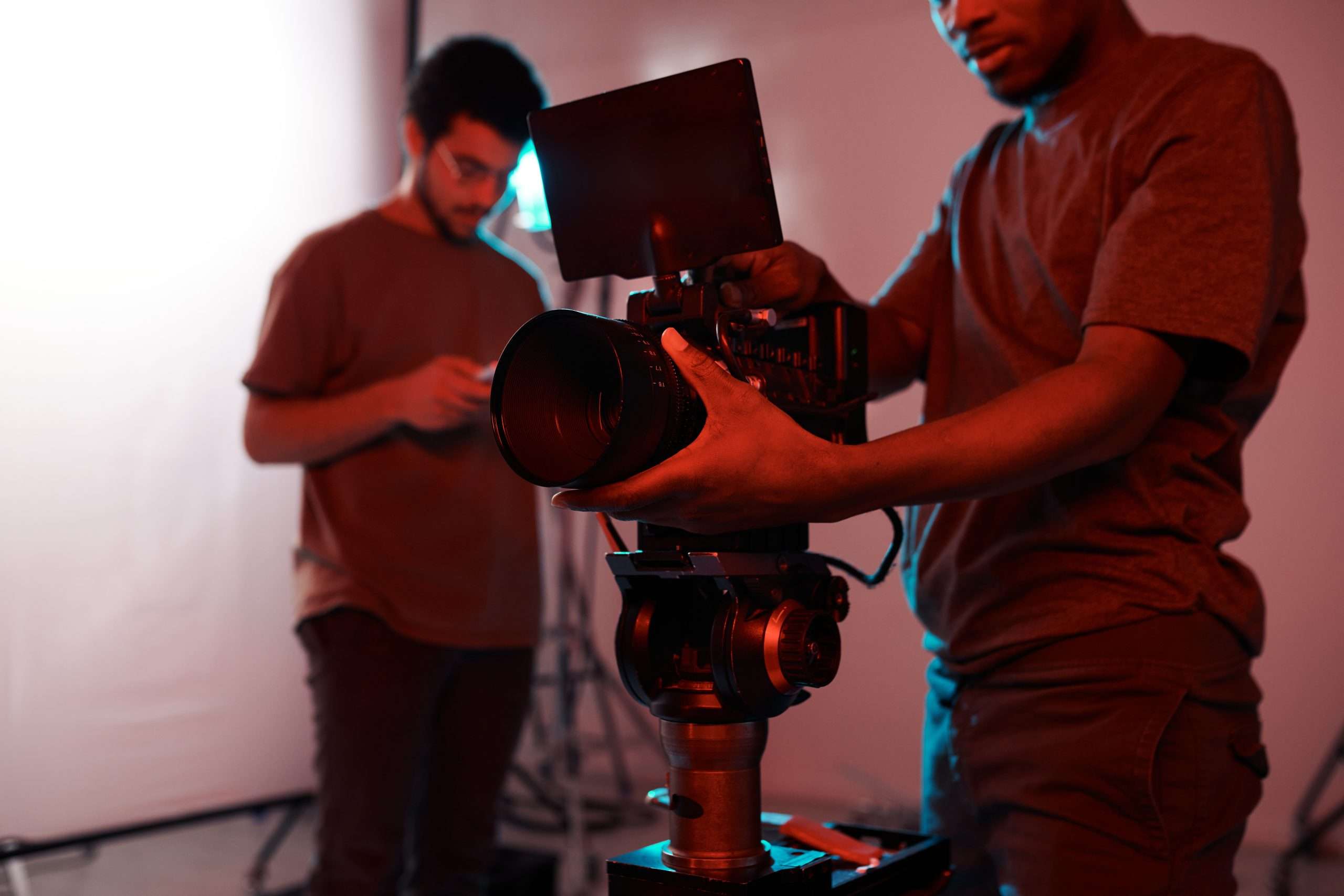Embarking on your videography journey can feel daunting, especially when faced with choosing the right equipment. Recent studies indicate that high-quality videos attract more viewership and engagement.
This guide unpacks essential tools for beginner videographers, from cameras to editing software, easing you into the world of video production. Ready to make your mark in the realm of videography? Read on!
Key Takeaways
- Choosing the right videography equipment is crucial for beginners to create high – quality videos.
- Essential tools include a video camera, tripod, lighting, microphone, audio cables, lenses, batteries, memory cards, hard drive, camera bag, mount rig, live streaming monitors and video editing software.
- High-definition cameras or DSLR cameras are ideal choices for capturing high-quality footage on a budget.
- Good lighting enhances the overall visual aesthetic of your videos and improves visibility.
- A reliable microphone ensures clear and professional audio in your videos.
- Investing in good quality audio cables minimizes interference and signal loss for clearer audio recordings.
- Lenses help capture different perspectives and create stunning visual effects in your videos.
- Having spare batteries and sufficient memory cards ensures uninterrupted filming sessions without running out of power or storage space.
- A durable hard drive provides ample storage space to store and access your footage easily
- A camera bag keeps your gear organized and protected during transport.
- A mount rig stabilizes your camera for steadier shots.
- Live streaming monitors allow you to preview footage in real – time while adjusting settings for better overall video quality.
- Good video editing software allows you to edit and enhance your footage creating a professional – looking final product.
Importance of Choosing the Right Videography Equipment

Investing in the right videography equipment is a crucial aspect that can significantly impact your video production. High-quality tools not only enhance the overall visual aesthetic but also drastically improve audio quality, creating content that resonates effectively with viewers.
The ideal combination of a good camera, tripod, lenses, and other essentials can turn even beginners into professionals.
Choosing appropriate gear streamlines workflow and reduces post-production effort. It allows for capturing more details like texture and color for an engaging visual experience. Furthermore, video quality affects viewer perception about content credibility; blurred vision or poor sound may have them questioning its reliability.
Therefore, selecting suitable videography equipment determines your project’s success rate to a large extent.
Essential Videography Equipment for Beginners

The essential videography equipment for beginners includes a video camera, tripod, lighting, microphone, audio cables, lenses, batteries, memory cards, hard drive, camera bag, mount rig, live streaming monitors, and video editing software.
Video Camera
A video camera is the cornerstone of any beginner videography setup. It’s a vital piece of equipment that can capture high-quality footage for various film projects, events, or documentaries.
High-definition (HD) cameras are an ideal choice as they offer excellent resolution and detail. For those on a tight budget, DSLR cameras also serve well due to their good picture quality and versatility.
Regardless of your selection, ensure that your camera has manual controls for focus and exposure; it allows more creativity while filming. You may opt for cameras with interchangeable lenses; this feature provides flexibility to cover different types of shots during filming sessions.
Tripod
A tripod ensures stability and reduces camera shake, providing crystal clear images with no blur. You can adjust the height according to your needs and secure it in place for the perfect shot.
Tripods also assist during long shoots where holding the camera becomes a challenge. They make panning smoother for capturing breathtaking panoramic views or tracking moving subjects effortlessly.
Invest in a sturdy yet lightweight model, suitable for both indoor shooting or outdoor adventures. Remember, not all tripods fit every camera, so ensure compatibility before purchasing one.
Lighting
Good lighting is essential for capturing high-quality videos. It helps to set the right mood, highlight important details, and improve overall visibility. When choosing lighting equipment for videography, consider investing in a good LED panel or softbox lights.
These options provide adjustable brightness levels and can be easily controlled to achieve the desired effect. Additionally, portable on-camera lights are handy for shooting in low-light conditions or when you need extra illumination on specific subjects.
Remember to experiment with different angles and positions to find the best lighting setup for each shot. With proper lighting, your videos will look more professional and visually appealing.
Microphone
A high-quality microphone is an essential piece of equipment for any videographer. A good microphone ensures clear and professional audio in your videos, making your content more engaging and enjoyable to watch.
Whether you’re shooting interviews, vlogs, or narrative videos, a microphone helps capture the sound with accuracy and reduces background noise. With various options available such as shotgun microphones for outdoor shoots or lavalier microphones for capturing individual voices, choosing the right one depends on your specific needs and budget.
Invest in a reliable microphone to enhance the overall quality of your videos and deliver a seamless viewing experience for your audience.
Audio Cables
Audio cables are an essential component of videography equipment, ensuring high-quality sound recording and playback. These cables connect microphones or audio devices to cameras or other recording equipment.
High-quality audio cables minimize interference and signal loss, resulting in clearer audio recordings. It is important to choose the right type of cable for your specific needs, such as XLR cables for professional-grade audio or 3.5mm TRS cables for connecting external microphones to cameras or smartphones.
Investing in good quality audio cables will greatly improve the overall audio quality of your videos and enhance the viewer’s experience.
In addition to choosing the right type of cable, it is also important to consider factors like cable length and durability. Longer cables may be necessary for certain shooting situations, while durable cables with strong connectors can withstand frequent use without degradation in performance.
Lenses
Lenses are an essential part of any videographer’s toolkit. They help you capture different perspectives and create stunning visual effects. From wide-angle to telephoto lenses, each has its own unique capabilities that can enhance the storytelling in your videos.
Wide-angle lenses allow you to capture more of the scene, making them perfect for landscapes or establishing shots. Telephoto lenses, on the other hand, bring distant subjects closer and are great for capturing details or getting tight shots without compromising image quality.
By investing in a selection of lenses, you’ll have the flexibility to adapt to various shooting situations and add depth and creativity to your videography projects.
Batteries
Batteries are a crucial component of any videography equipment setup. They provide the necessary power to keep your camera and other devices running smoothly during shoots. Having spare batteries is essential, especially when shooting on location or for extended periods of time.
It ensures that you don’t miss out on capturing those important moments due to a drained battery. Always make sure to charge the batteries fully before heading out and bring extras in your camera bag to avoid any interruptions or delays.
With fully charged batteries at hand, you can confidently focus on capturing stunning footage without worrying about losing power.
Memory Cards
Memory cards are an essential component of videography equipment for beginners. They provide the necessary storage capacity to capture and store high-quality video footage. Memory cards come in different sizes and formats, such as SD, microSD, and CF cards, allowing you to choose one that best suits your camera’s requirements.
It is crucial to invest in memory cards with sufficient storage capacity to ensure you can record without the risk of running out of space. With a reliable memory card, you can focus on capturing great shots and worry less about running out of storage during your filming sessions.
Hard Drive
A hard drive is an essential piece of equipment for any videographer. It provides a large amount of storage space for your videos, allowing you to store and access your footage easily.
With a hard drive, you can keep all of your video files in one place, making it convenient to organize and edit your work. Plus, having a backup copy on a hard drive ensures that you won’t lose your footage if something happens to your camera or memory cards.
Invest in a reliable and durable hard drive to protect and preserve the fruits of your videography labor.
By using an external hard drive specifically designed for videography purposes, you can ensure that all of your important footage is safe and secure. This way, you won’t have to worry about losing hours upon hours of work due to technical issues or accidents.
Camera Bag
A camera bag is an essential piece of equipment for videographers. It serves as a protective and convenient storage solution for your camera, lenses, batteries, memory cards, and other accessories.
With its compartments and padding, it keeps everything organized and safe during transport. Whether you’re shooting on location or traveling to different sites, having a durable camera bag ensures that your gear is easily accessible while providing the necessary protection from dust, moisture, and accidental drops.
Invest in a high-quality camera bag that fits your specific needs to keep your equipment secure and ready for action.
Mount Rig
Mount Rig is an essential piece of videography equipment that allows you to stabilize your camera and achieve steady shots. It provides a secure platform for mounting your camera, along with additional accessories such as lights or microphones.
By using a mount rig, you can minimize shake and movement, resulting in smoother and more professional-looking footage. Whether you’re shooting handheld or using a tripod, a mount rig is a valuable tool for beginners looking to improve the quality of their videos.
Live Streaming Monitors
Live streaming monitors are an essential piece of equipment for videographers who want to produce high-quality live content. These monitors allow you to preview the footage in real-time, ensuring that everything is framed correctly and in focus.
With a live streaming monitor, you can also adjust settings such as exposure and white balance on the spot, resulting in better overall video quality. Whether you’re filming interviews, events, or tutorials, investing in a reliable live streaming monitor will greatly improve your workflow and the final product of your videos.
Video Editing Software
Video editing software is an essential tool for any beginner videographer. It allows you to edit and enhance your footage, adding effects, transitions, and overlays to create a professional-looking final product.
With video editing software, you can trim and rearrange clips, adjust color and brightness levels, and even add music or voiceovers. The best part is that there are plenty of user-friendly options available on the market today that don’t require extensive technical knowledge.
So whether you’re just starting out or have some experience under your belt, investing in good video editing software will take your videos to the next level.
Choosing the Right Equipment – Budget, Team Size, and Formats
Choosing the right videography equipment involves considering your budget, team size, and formats you will be working with. First, determine how much you can afford to spend on equipment.
It’s important to invest in quality gear that fits within your budget. Next, consider the size of your team. If you’re working solo, you may need equipment that is easy to set up and operate on your own.
However, if you have a larger team, you’ll want to consider more advanced equipment that allows for collaboration and multiple camera angles. Finally, think about the formats you will be shooting in.
Different cameras and accessories are designed for specific formats such as DSLR or mirrorless cameras for photography-style videos or camcorders for professional video production.
By taking these factors into account when choosing your equipment, you can ensure that it meets your needs and helps elevate the quality of your videography work without breaking the bank.
Tips for Getting Started with Videography
Familiarize yourself with your equipment, plan your shots, practice, utilize natural lighting, and experiment with different angles and techniques.
Familiarize yourself with your equipment
To excel in videography, it is essential to familiarize yourself with your equipment. Take the time to understand every feature and function of your video camera, tripod, lighting setup, microphone, and other tools.
Practice adjusting settings, exploring different shooting modes, and experimenting with angles. This hands-on approach will give you confidence when capturing footage and help you discover creative ways to enhance your videos.
By understanding how each piece of equipment works together, you’ll be able to make the most out of your gear and produce high-quality videos that stand out from the crowd.
Plan your shots
To capture compelling footage, it’s crucial to plan your shots ahead of time. This involves thinking about the composition, angles, and movements you want to incorporate into your video.
By planning your shots, you can create a more visually appealing and coherent story. Think about how each shot will contribute to the overall narrative or theme of your video. Consider different camera techniques such as establishing shots, close-ups, and tracking shots to add variety and visual interest.
Furthermore, take note of any specific sequences or actions that you want to capture accurately. Having a clear plan in mind will help you stay organized during the shoot and ensure that you don’t miss any important moments.
Practice, practice, practice
To become a skilled videographer, you must practice, practice, practice. The more you use your equipment and experiment with different techniques, the better you’ll become at capturing high-quality footage.
Set aside time each day to film various subjects and scenes using different camera angles and lighting setups. Review your footage and analyze what works well and what needs improvement.
By consistently practicing your skills, you’ll develop a keen eye for detail and enhance your ability to capture compelling videos that engage viewers. So get out there and start shooting!
Utilize natural lighting
Utilize the power of natural lighting to enhance your videography. Natural light can create a beautiful and authentic look in your videos without the need for additional equipment.
Find well-lit areas or shoot during times when the sun is not too harsh, such as early morning or late afternoon. Position your subject near windows or doors, allowing ample natural light to illuminate their face or surroundings.
Experiment with different angles and positions to make the most of this free and versatile lighting source. By harnessing the beauty of natural light, you can add depth and realism to your videos effortlessly.
Experiment with different angles and techniques
Explore and try out various angles and techniques to add creativity and visual interest to your videos. Whether it’s low-angle shots for a dramatic effect or overhead shots for a unique perspective, experimenting with different angles can help you capture the attention of your audience.
Additionally, explore different shooting techniques such as panning, tracking, and zooming in or out. These techniques can enhance the storytelling aspect of your videos and bring them to life.
Remember to review and analyze your footage afterwards to see what works best for each scene or subject.
Invest in essential equipment first
Investing in essential equipment is crucial for beginner videographers. By prioritizing the must-have items, you can kickstart your videography journey with a solid foundation. Start by getting a reliable video camera that suits your budget and needs.
A sturdy tripod is also essential for stable shots, while proper lighting equipment will enhance the visual quality of your videos. Don’t forget to invest in a good microphone for clear audio capture.
Additionally, make sure you have enough memory cards and batteries to keep shooting without interruptions. By focusing on these key pieces of equipment first, you’ll be well-equipped to start creating professional-looking videos right away.
Stay organized and don’t overspend
To ensure a smooth videography experience, it is crucial to stay organized and avoid overspending on unnecessary equipment. Start by creating a detailed checklist of the essential equipment you need.
This will help you focus on what’s truly necessary and prevent impulsive purchases that can drain your budget. Additionally, keep track of your spending by setting a clear budget and sticking to it.
By staying organized and mindful of your expenses, you can build a well-rounded videography setup without breaking the bank.
Conclusion
In conclusion, choosing the right videography equipment is crucial for beginners to create high-quality videos. From a reliable video camera and tripod to proper lighting and audio equipment, having the essential tools will greatly enhance your videography skills.
Remember to invest wisely based on your budget and team size, and don’t forget to practice and experiment with different techniques to improve your craft. Happy filming!
What Equipment is Essential for Documentary Videography?
When diving into documentary videography, there are a few equipment essentials you’ll need to capture compelling visuals and audio. A high-quality camera, preferably with interchangeable lenses, is a must. Additionally, invest in a sturdy tripod and a reliable external microphone to ensure clear audio. Adequate lighting equipment is essential for varied shooting conditions. Lastly, don’t forget memory cards, batteries, and a reliable storage system to preserve your footage. Documentary videography faqs: comprehensive guide can provide detailed information on these and other equipment essentials.
What Are the Essential Equipment for Beginner Videographers?
When starting out as a videographer, there are some essential equipment pieces you should have in your arsenal. Firstly, a reliable camera with good resolution and video capabilities is crucial. Additionally, a tripod ensures stable shots, while a quality microphone enhances audio recording. Other useful tools include memory cards, extra batteries, and a versatile lens kit. These are the essential equipment beginner videographers need to embark on their creative journey. For more information on general videography FAQs, explore further resources online.
FAQs
1. What essential equipment do I need to start videography?
To get started with videography, you will need a camera (DSLR or mirrorless), a tripod for stability, and a microphone for better audio quality.
2. Are there any budget-friendly options for videography equipment?
Yes, there are budget-friendly options available for videography equipment. You can find affordable cameras, tripods, and microphones that still deliver good quality results.
3. Do I need additional lighting equipment for videography?
Additional lighting equipment can enhance the quality of your videos, especially in low-light environments. However, natural light or well-lit areas can also work effectively without extra lighting.
4. Can I use my smartphone instead of a dedicated camera for videography?
Yes, smartphones with good video capabilities can be used as an alternative to dedicated cameras for basic videography needs. They offer convenience and portability while still producing decent quality footage.
5. What editing software is best for beginners in videography?
For beginners in videography, user-friendly editing software like Adobe Premiere Pro or iMovie is recommended. These programs provide essential tools and features while being easy to learn and navigate.






